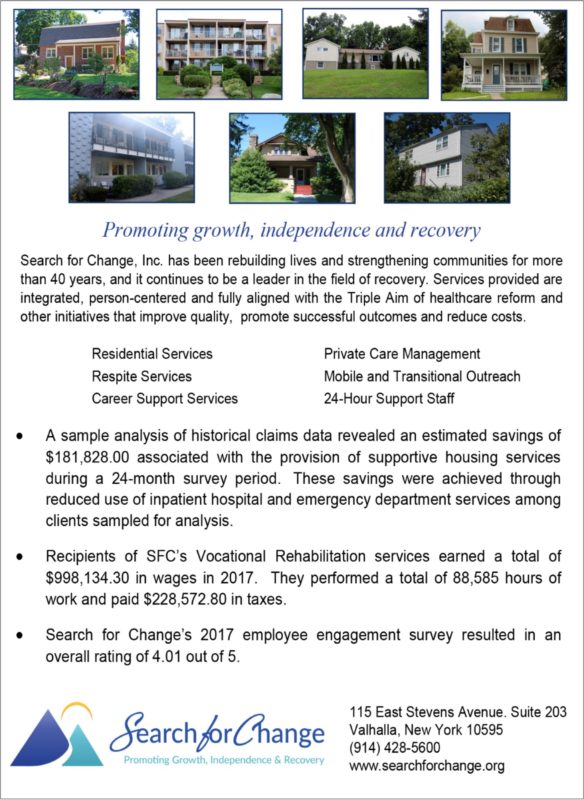The COVID-19 pandemic has upended our lives unlike anything most of us have experienced. It has exacted an incalculable toll in terms of lives lost or forever altered, and its impact on our institutions and economies is beyond measure. It is exceptionally insidious in its effects on our relationships and communities, as the imperative to distance ourselves from others in defiance of our social nature is inimical to our emotional well-being. This is especially so for individuals with behavioral health conditions for whom positive and affirming connections are integral to recovery.

Ashley Brody, MPA, CPRP
Research findings on the effects of social isolation abound, and most converge on a common conclusion. Actual and perceived isolation are not merely injurious to psychosocial health but associated with premature mortality (Holt-Lunstad, Smith, Baker, Harris, & Stephenson, 2015). Numerous studies suggest isolation and its attendant loneliness produce changes in blood pressure and increases in stress hormones and inflammation. Other studies associate isolation with an increased risk of depression, dementia, cardiac arrest, and stroke (Morris, 2020). The emotional and psychological dangers of isolation are similarly well documented. It has been proven to cause anxiety and depression and to exacerbate a host of symptoms among those with preexisting mental health conditions (Alarcón, 2020). Such adverse consequences of isolation warrant great concern for any populations to which they might be applied, but their implications for individuals with serious behavioral health concerns – a cohort plagued with a significantly diminished life expectancy – are particularly grievous. It is in these respects that COVID poses an existential threat to the behavioral health community and commands us to marshal our collective resources in defense of the most vulnerable among us.
Thankfully, we possess a robust arsenal of antidotes to the ill effects of isolation that may be deployed in response to this epidemic. Modern telecommunications technologies permit us to connect in ways we could have scarcely imagined a decade ago, and the healthcare sector is capitalizing on the use of these technologies in service of its clientele. For instance, the COVID crisis has produced an exponential increase in the adoption of telehealth enabled, in part, by the easing of regulations that heretofore restricted its use to select classes of service providers and for circumscribed purposes. Telehealth permits engagement of individuals who frequently experience difficulty keeping appointments with their health and social service providers even under “ordinary” circumstances. Nevertheless, its widespread adoption requires both a permanent reevaluation of formerly restrictive regulations and the resolution of other impediments to access. Many would-be recipients of telehealth do not possess telecommunications devices or broadband services equipped to accommodate this modality in a manner that is both reliable and compliant with prevailing privacy and confidentiality requirements. Therefore, investments in the telehealth infrastructure must commit additional resources to the provider and recipient communities alike.
The benefits of telehealth notwithstanding, it is not a panacea for the perils of isolation. Amelioration of isolation, loneliness, and their corresponding health risks requires a holistic orientation that accounts for multiple domains of wellness as espoused by the Substance Abuse and Mental Health Services Administration (SAMHSA). These eight distinct but overlapping “dimensions” of wellness include the spiritual, emotional, social, occupational, financial, environmental, physical, and intellectual, each of which must be addressed in order to ensure optimal health (SAMHSA, 2016). To this end, providers must develop innovative ways to engage individuals in managing their overall health and wellness amidst the challenges of forced isolation. This might begin with the identification and solidification of vital connections, particularly among those who support and encourage each other in their pursuit of desired goals and objectives within the foregoing dimensions. For example, those who share common spiritual concerns, some of which might be exacerbated by current prohibitions on conventional forms of worship, may support each other through virtual religious services or related gatherings (Health In Aging, 2020). Communities of this type can also promote other forms of connection and activities conductive to whole health. Proven cornerstones of mental and emotional health, such as maintenance of a daily routine, regularly scheduled exposure to the outdoors, and adherence to a nutritious diet and exercise regimen are often difficult to sustain in the absence of social support and reinforcement. Virtual classes or focused forums may nourish participants’ motivation to attend to such matters while fulfilling their social and emotional needs (Rush University Medical Center, 2020). Perhaps most importantly, they may foster participants’ sense of connectedness and thereby counteract the emotional and psychological consequences of physical isolation.
The COVID pandemic presents both an extraordinary challenge and a singular opportunity for growth. It also promises to deepen our appreciation for the ties that bind us but are too often neglected or taken for granted. Through forced physical separation from our families, friends, and fellows we may uncover novel means of reestablishing our connections and enhancing their value. In doing so, we will strengthen our communities and our collective mental health and reveal a hidden blessing within a global tragedy.
The author may be reached at (914) 428-5600 (x9228), abrody@searchforchange.org.





